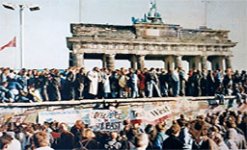Navigation
Install the app
How to install the app on iOS
Follow along with the video below to see how to install our site as a web app on your home screen.

Note: this_feature_currently_requires_accessing_site_using_safari
More options
You are using an out of date browser. It may not display this or other websites correctly.
You should upgrade or use an alternative browser.
You should upgrade or use an alternative browser.
cold war
Hey!
Welcome to We love the Eighties Community! We’re thrilled you’ve stopped by our ’80s paradise. 🌟 Here, we celebrate all things ’80s – from iconic music, movies, fashion, to the vibrant culture that defined a generation! Feel free to introduce yourself and start exploring the threads. Don’t hesitate to share your thoughts, memories, or even your latest ‘80s finds! We’re excited to have you join our vibrant community. Join us to connect with fellow enthusiasts, share your favorite memories, and dive into engaging discussions that bring the nostalgia of the ‘80s to life. Whether you’re a die-hard fan or just curious about this dynamic era, you’ll find a home here.
The Cold War was a period of geopolitical tension between the United States and the Soviet Union and their respective allies, the Western Bloc and the Eastern Bloc. Cold war is used because there was no large-scale fighting directly between the two superpowers, but they each supported opposing sides in major regional conflicts known as proxy wars. The conflict was based on the ideological and geopolitical struggle for global influence by these two superpowers, following their roles as the Allies of World War II that led to victory against Nazi Germany and Imperial Japan in 1945. Aside from the nuclear arms race and conventional military deployment, the struggle for dominance was expressed via indirect means, such as psychological warfare, propaganda campaigns, espionage, far-reaching embargoes, sports diplomacy, and technological competitions like the Space Race.
The Western Bloc was led by the United States, as well as a number of other First World nations that were generally liberal democratic but tied to a network of often authoritarian, Third World states, most of which were the European powers' former colonies. The Eastern Bloc was led by the Soviet Union and its Communist Party, which had an influence across the Second World and was also tied to a network of authoritarian states. The Soviet Union had a command economy and installed similarly Communist regimes in its satellite states. United States involvement in regime change during the Cold War included support for anti-communist and right-wing dictatorships, governments, and uprisings across the world, while Soviet involvement in regime change included the funding left-wing parties and revolutions around the world. As nearly all the colonial states underwent decolonization and achieved independence in the period from 1945 to 1960, many became Third World battlefields in the Cold War.
The first phase of the Cold War began shortly after the end of World War II in 1945. The United States and its Western European allies sought to strengthen their bonds and used the policy of containment against Soviet influence; they accomplished this most notably through the formation of NATO, which was essentially a defensive agreement in 1949. The Soviet Union countered with the Warsaw Pact in 1955, which had similar results with the Eastern Bloc. As by that time the Soviet Union already had an armed presence and political domination all over its eastern satellite states, the pact has been long considered superfluous. Although nominally a defensive alliance, the Warsaw Pact's primary function was to safeguard Soviet hegemony over its Eastern European satellites, with the pact's only direct military actions having been the invasions of its own member states to keep them from breaking away; in the 1960s, the pact evolved into a multilateral alliance, in which the non-Soviet Warsaw Pact members gained significant scope to pursue their own interests. In 1961, Soviet-allied East Germany constructed the Berlin Wall to prevent the citizens of East Berlin from fleeing to West Berlin, at the time part of United States-allied West Germany. Major crises of this phase included the Berlin Blockade of 1948–1949, the Chinese Communist Revolution of 1945–1949, the Korean War of 1950–1953, the Hungarian Revolution of 1956 and the Suez Crisis of that same year, the Berlin Crisis of 1961, the Cuban Missile Crisis of 1962, and the Vietnam War of 1964–1975. Both superpowers competed for influence in Latin America and the Middle East, and the decolonising states of Africa, Asia, and Oceania.
Following the Cuban Missile Crisis, the fourth phase of the Cold War saw the Sino-Soviet split between China and the Soviet Union's complicate relations within the Communist sphere, leading to the Sino-Soviet border conflict, while France, a Western Bloc state, began to demand greater autonomy of action. The Warsaw Pact invasion of Czechoslovakia to suppress the Prague Spring of 1968, while the United States experienced internal turmoil from the civil rights movement and opposition to United States involvement in the Vietnam War. In the 1960s–1970s, an international peace movement took root among citizens around the world. Movements against nuclear weapons testing and for nuclear disarmament took place, with large anti-war protests. By the 1970s, both sides had started making allowances for peace and security, ushering in a period of détente that saw the Strategic Arms Limitation Talks and the 1972 visit by Richard Nixon to China that opened relations with China as a strategic counterweight to the Soviet Union. A number of self-proclaimed Marxist–Leninist governments were formed in the second half of the 1970s in developing countries, including Angola, Mozambique, Ethiopia, Cambodia, Afghanistan, and Nicaragua.
Détente collapsed at the end of the decade with the beginning of the Soviet–Afghan War in 1979. Beginning in the 1980s, the fifth phase of the Cold War was another period of elevated tension. The Reagan Doctrine led to increased diplomatic, military, and economic pressures on the Soviet Union, which at the time was undergoing the Era of Stagnation. The sixth phase of the Cold War saw the new Soviet leader Mikhail Gorbachev introducing the liberalizing reforms of glasnost ("openness", c. 1985) and perestroika ("reorganization", c. 1987) and ending Soviet involvement in Afghanistan in 1989. Pressures for national sovereignty grew stronger in Eastern Europe, and Gorbachev refused to militarily support the Communist governments any longer.
The fall of the Iron Curtain after the Pan-European Picnic and the Revolutions of 1989, which represented a peaceful revolutionary wave with the exception of the Romanian Revolution and the Afghan Civil War (1989–1992), overthrew almost all of the Marxist–Leninist regimes of the Eastern Bloc. The Communist Party of the Soviet Union itself lost control in the country and was banned following the 1991 Soviet coup d'état attempt that August. This in turn led to the formal dissolution of the Soviet Union in December 1991 and the collapse of Communist governments across much of Africa and Asia. The Russian Federation became the Soviet Union's successor state, while many of the other republics emerged from the Soviet Union's collapse as fully independent post-Soviet states. The United States was left as the world's sole superpower. The Cold War and its events have left a significant legacy. Effects of the Cold War include references of the culture during the Cold War, especially with themes of Cold War espionage and the threat of nuclear warfare. The Cold War is generally followed by the categorization of international relations since 1989 and post–Cold War era to underline its impact.
View More On Wikipedia.org
The Western Bloc was led by the United States, as well as a number of other First World nations that were generally liberal democratic but tied to a network of often authoritarian, Third World states, most of which were the European powers' former colonies. The Eastern Bloc was led by the Soviet Union and its Communist Party, which had an influence across the Second World and was also tied to a network of authoritarian states. The Soviet Union had a command economy and installed similarly Communist regimes in its satellite states. United States involvement in regime change during the Cold War included support for anti-communist and right-wing dictatorships, governments, and uprisings across the world, while Soviet involvement in regime change included the funding left-wing parties and revolutions around the world. As nearly all the colonial states underwent decolonization and achieved independence in the period from 1945 to 1960, many became Third World battlefields in the Cold War.
The first phase of the Cold War began shortly after the end of World War II in 1945. The United States and its Western European allies sought to strengthen their bonds and used the policy of containment against Soviet influence; they accomplished this most notably through the formation of NATO, which was essentially a defensive agreement in 1949. The Soviet Union countered with the Warsaw Pact in 1955, which had similar results with the Eastern Bloc. As by that time the Soviet Union already had an armed presence and political domination all over its eastern satellite states, the pact has been long considered superfluous. Although nominally a defensive alliance, the Warsaw Pact's primary function was to safeguard Soviet hegemony over its Eastern European satellites, with the pact's only direct military actions having been the invasions of its own member states to keep them from breaking away; in the 1960s, the pact evolved into a multilateral alliance, in which the non-Soviet Warsaw Pact members gained significant scope to pursue their own interests. In 1961, Soviet-allied East Germany constructed the Berlin Wall to prevent the citizens of East Berlin from fleeing to West Berlin, at the time part of United States-allied West Germany. Major crises of this phase included the Berlin Blockade of 1948–1949, the Chinese Communist Revolution of 1945–1949, the Korean War of 1950–1953, the Hungarian Revolution of 1956 and the Suez Crisis of that same year, the Berlin Crisis of 1961, the Cuban Missile Crisis of 1962, and the Vietnam War of 1964–1975. Both superpowers competed for influence in Latin America and the Middle East, and the decolonising states of Africa, Asia, and Oceania.
Following the Cuban Missile Crisis, the fourth phase of the Cold War saw the Sino-Soviet split between China and the Soviet Union's complicate relations within the Communist sphere, leading to the Sino-Soviet border conflict, while France, a Western Bloc state, began to demand greater autonomy of action. The Warsaw Pact invasion of Czechoslovakia to suppress the Prague Spring of 1968, while the United States experienced internal turmoil from the civil rights movement and opposition to United States involvement in the Vietnam War. In the 1960s–1970s, an international peace movement took root among citizens around the world. Movements against nuclear weapons testing and for nuclear disarmament took place, with large anti-war protests. By the 1970s, both sides had started making allowances for peace and security, ushering in a period of détente that saw the Strategic Arms Limitation Talks and the 1972 visit by Richard Nixon to China that opened relations with China as a strategic counterweight to the Soviet Union. A number of self-proclaimed Marxist–Leninist governments were formed in the second half of the 1970s in developing countries, including Angola, Mozambique, Ethiopia, Cambodia, Afghanistan, and Nicaragua.
Détente collapsed at the end of the decade with the beginning of the Soviet–Afghan War in 1979. Beginning in the 1980s, the fifth phase of the Cold War was another period of elevated tension. The Reagan Doctrine led to increased diplomatic, military, and economic pressures on the Soviet Union, which at the time was undergoing the Era of Stagnation. The sixth phase of the Cold War saw the new Soviet leader Mikhail Gorbachev introducing the liberalizing reforms of glasnost ("openness", c. 1985) and perestroika ("reorganization", c. 1987) and ending Soviet involvement in Afghanistan in 1989. Pressures for national sovereignty grew stronger in Eastern Europe, and Gorbachev refused to militarily support the Communist governments any longer.
The fall of the Iron Curtain after the Pan-European Picnic and the Revolutions of 1989, which represented a peaceful revolutionary wave with the exception of the Romanian Revolution and the Afghan Civil War (1989–1992), overthrew almost all of the Marxist–Leninist regimes of the Eastern Bloc. The Communist Party of the Soviet Union itself lost control in the country and was banned following the 1991 Soviet coup d'état attempt that August. This in turn led to the formal dissolution of the Soviet Union in December 1991 and the collapse of Communist governments across much of Africa and Asia. The Russian Federation became the Soviet Union's successor state, while many of the other republics emerged from the Soviet Union's collapse as fully independent post-Soviet states. The United States was left as the world's sole superpower. The Cold War and its events have left a significant legacy. Effects of the Cold War include references of the culture during the Cold War, especially with themes of Cold War espionage and the threat of nuclear warfare. The Cold War is generally followed by the categorization of international relations since 1989 and post–Cold War era to underline its impact.
View More On Wikipedia.org
-
B
The Berlin Wall – The Fall of the Decade
This thread is for the general discussion of the Article The Berlin Wall – The Fall of the Decade. Please add to the discussion here.- Brad Bartlett
- Thread
- berlin division berlin wall berlin wall escape berlin wall fall checkpoint charlie cold war cold war relics east germany reunification of germany stasi west germany
- Replies: 0
- Forum: The 80s Lounge
-

The Berlin Wall – The Fall of the Decade
The Berlin Wall – The Fall of the Decade The 1980s was quite the decade. Not only did these years see the rise in neon, punk rock music and the introduction of the VCR to the world, but it also marked a seismic shift in global politics. Namely, 1989 saw the fall of the Berlin Wall, one of the...- Brad Bartlett
- Article
- 5 min read
- berlin division berlin wall berlin wall escape berlin wall fall checkpoint charlie cold war cold war relics east germany reunification of germany stasi west germany
- Category: 80s Decade
-
B
Exploring the Dark Side of the 80s
This thread is for the general discussion of the Article Exploring the Dark Side of the 80s. Please add to the discussion here.- Brad Bartlett
- Thread
- 1980s 80s pop culture aids epidemic cold war economic challenges of the 80s reaganomics satanic panic social issues in the 80s war on drugs
- Replies: 7
- Forum: The 80s Lounge
-

Exploring the Dark Side of the 80s
Exploring the Dark Side of the 80s What springs to mind if you conjure up an image of the 1980s? Perhaps it's a vibrant splash of neon colors, the catchy synths of a pop song, or the carefree glam of iconic movies and TV shows. The 80s are often portrayed as a decade of fun, innovation, and...- Brad Bartlett
- Article
- 4 min read
- 1980s 80s pop culture aids epidemic cold war economic challenges of the 80s reaganomics satanic panic social issues in the 80s war on drugs
- Category: 80s Decade

